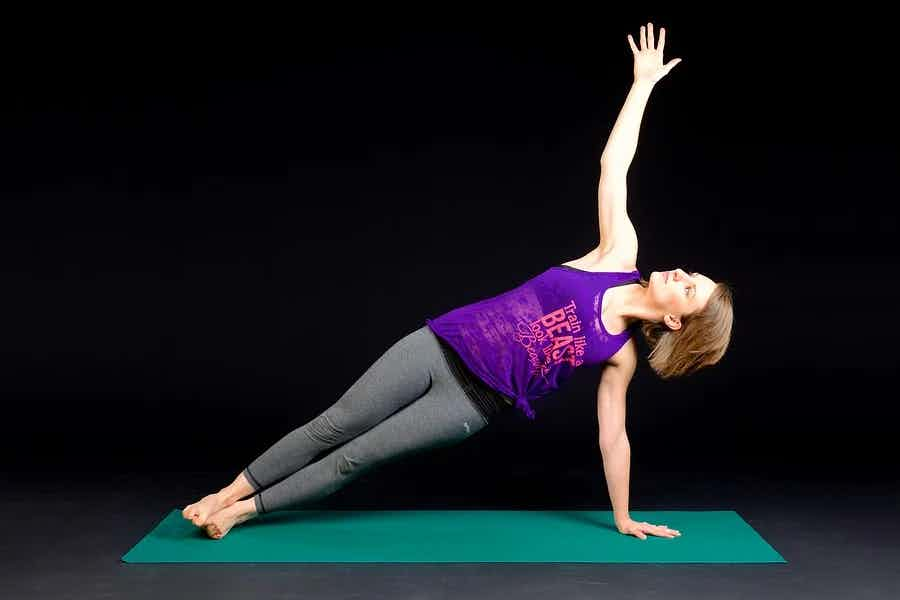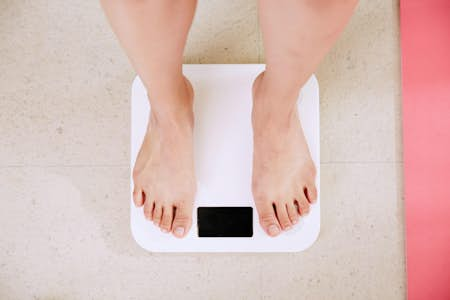As you age, the muscles that make up your core can weaken. This is usually down to lifestyle changes such as becoming less active, and gradual muscle loss. A weakened core can have many adverse effects on your health. In this article, we'll explain what your core is, what it does, and why it is crucial to maintain a strong core as you age.
Ready to transform your life? Whether you're looking for a new pair of running shoes or some shiny home gym equipment, you can find everything you need to fuel your fitness journey with our partner brands.
What is your core?
When people talk about the core, they usually point to their abdomen. But actually, the core is a grouping of muscles that cover the torso. While most of the muscles can be found around the stomach or lower back, some, such as the erector spinae, travel the length of your spine.
The major muscles of the core are:
- Abdominals (Rectus abdominus and transversus abdominus)
- Obliques (internal and external)
- Pelvic Floor Muscles
- Muscles of the Spine (multifidus, erector spinae, longissimus thoracis)
- Diaphragm
Some people also include the latissimus dorsi, glutes, and trapezius muscles. However, these make a minor contribution to the core, at best. But the idea that your core just extends to your abdominal muscles is false.
Why is it important to maintain a strong core?
Your core has many vital roles in the body. Your core helps with breathing, is required to perform pretty much any physical movement, helps to improve posture, reduce injury risk, and can also prevent incontinence.
Many women are encouraged to strengthen their pelvic floor muscles as they age, which involves strengthening the core.
Most chronic injuries (i.e. not injuries caused by an accident) result from underdeveloped core muscles and lousy posture/technique.
You may be thinking “That doesn’t affect me, I don’t go to the gym”, but ask yourself this. Do you pick up bags of shopping out of the car? Do you mow the lawn? Do you carry laundry up and down the stairs?
These actions may seem ridiculously easy, but without a strong core, they can quickly become unmanageable. People are as likely to get a hernia picking up a surprisingly heavy bag from the floor as they are from deadlifting a barbell.
The older you get, the more critical it is to maintain a strong core, as a weak core can lead to injury and then a lack of freedom.
Common misconceptions about training your core
There are a few common misconceptions about training the core muscles that we are going to identify now.
You should perform only ab exercises to strengthen your core
This is the most common misconception about training your core; that it is all based around training the abdominal muscles directly.
Obviously, we know that the core is much more than just the abdominal muscles. But even some people who know this, still think that it is all about targeting those muscles individually.
You should perform only compound exercises to strengthen your core
When people started to question advice to target the core muscles with isolation exercises like crunches, sit-ups, and raises, some people went to the other extreme, claiming all abdominal and isolation exercises were worthless.
People claimed you could work the core best by performing compound movements: exercises such as the deadlift that simultaneously work a huge range of muscle groups. Why waste time training the abs directly, or the obliques, or lower back, when you can train all the muscles during one exercise?
While it is true compound movements can strengthen the core muscles, this does not mean that isolation exercises targeting the abs, obliques, or other core muscles are without merit.
A combination of compound movements and specific exercises is the best approach.
How to strengthen your core
Strengthening the core is not that difficult to do; you just need to be consistent and focus on technique while exercising. A combination of compound movements like squats and isolation movements like abdominal crunches is ideal. But cardio exercises can also be beneficial—particularly swimming, which works the whole body.
Learning how to perform a plank is one of the best core strengthening exercises you can do. The push-up position plank is particularly useful.
Place both hands on the floor, shoulder-width apart. Get into the push-up position and ensure there is a straight line from the back of your heels to your shoulders. Ensure that your hips are not sagging nor are they raised too high. Squeeze your glutes and squeeze your abs and hold this position for 10 to 30 seconds.
Check out this video to see a push-up position plank performed correctly.
Once you can comfortably hold this position for 30 seconds, you can begin to progress to more challenging variations.
You can perform the elbow plank, which is identical but instead of placing your palms on the ground, you put your forearms on the ground. Then there is the Plank Get Ups exercise, where you alternate between hands and forearms (see video below).
Then you’ve got traditional abdominal exercises such as crunches, twists, bent knee raises, weighted crunches, and sit-ups.
Many exercises target the lower back muscles, including Romanian deadlifts, good mornings, squats, regular deadlifts, and kettlebell swings. But please get a personal trainer or fitness coach to teach you how to perform these first, as they can be harmful if performed incorrectly.
What to do now
If possible, join a gym, hire a personal trainer, or ask a fitness instructor to teach you how to perform the following exercises:
- Dumbbell Deadlift
- Goblet Squat
- Plank
- Bent Knee Crunches
There are hundreds of other exercises you can learn, but these four exercises are a great place to start. If you can't get to the gym and are training at home, you can perform bodyweight squats, planks, and bent knee crunches. All you need is an exercise mat. Finding a cardio exercise that you can perform regularly is also a great idea.









